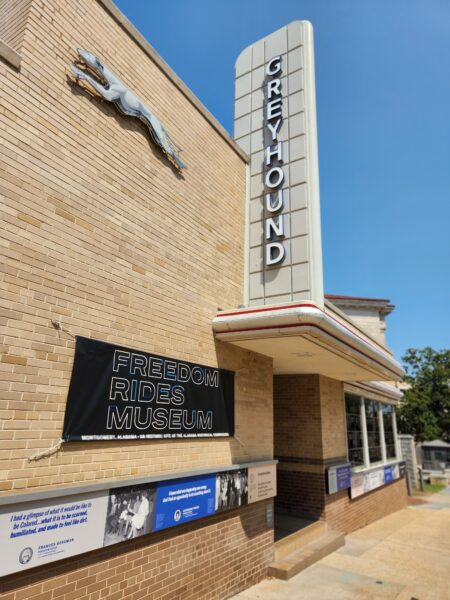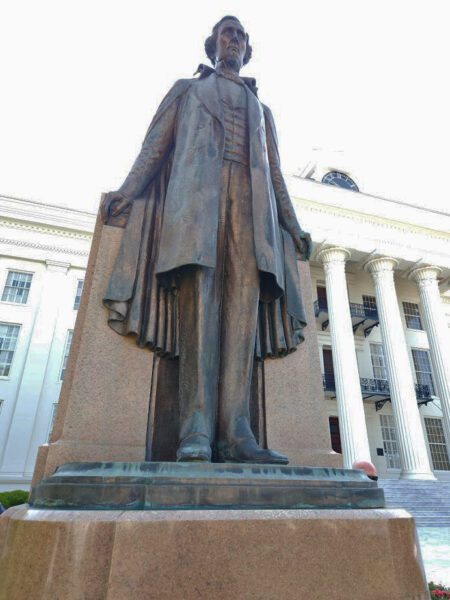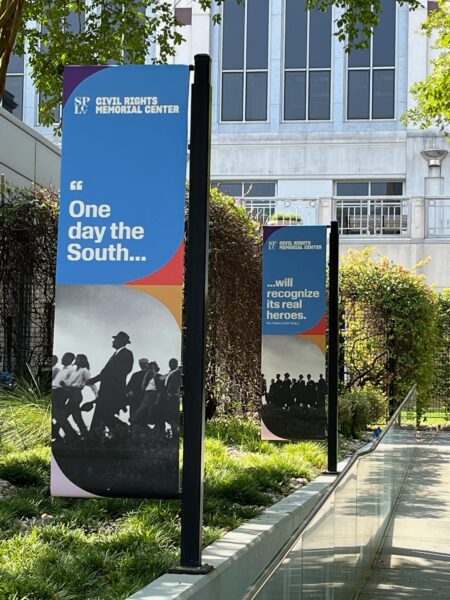The Schizophrenic South
Jared Taylor, American Renaissance, August 31, 2023
Earlier this month the Southern Cultural Center (SCC) invited me to speak at its second annual conference. This is a group of Christian Southerners fighting to preserve the Southern people. It’s motto is “Our Culture, Our Heritage, Our Land, Our People,” and the SCC means it.

The group’s headquarters in Wetumpka, Alabama — just 16 miles from the state capital, Montgomery — proudly flies the Confederate Battle Flag alongside the Alabama state flag.

The annual conference could not have been more Southern nor more hospitable. The SCC is run by Michael Whorton, shown here on the right with Cliff McGhar.
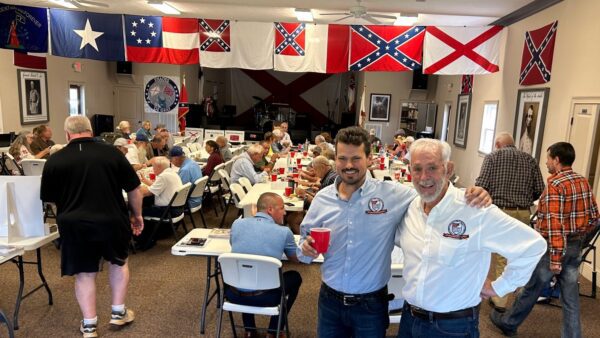
I was unable to make the first day of the conference, and I understand Mr. McGhar was a spellbinding speaker.
On the second day, which I did attend, John Hill gave a fascinating talk about his life’s cause: preserving the memory of his collateral ancestor, Confederate general Ambrose Powell Hill.
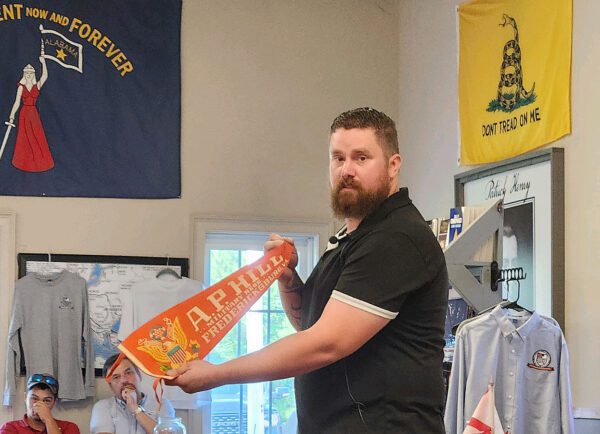
The general was the subject of unwanted posthumous fame when his monument in Richmond — which was also his grave site — fell victim to the anti-white hysteria after George Floyd ascended into heaven.
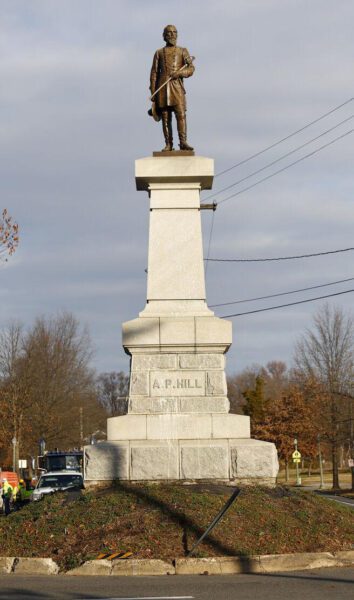
John Hill fought to preserve the monument, and when that effort failed, he supervised the reinterment of the general’s remains. The ceremony took place this January in Culpepper, Virginia, when I had the privilege of first meeting Mr. Hill.
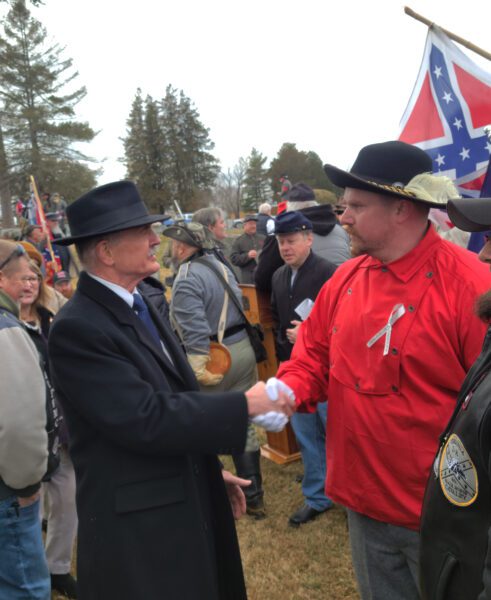
The next speaker was James Edwards, host of The Political Cesspool, who won a standing ovation with a talk about the signs for hope that he sees for our people.
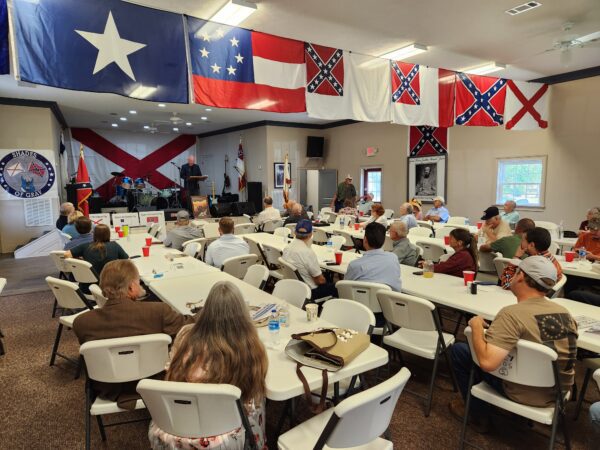
He had given an inspiring performance at the AmRen conference the weekend before. He was a very hard speaker to follow.
I did my best, however, and began with something I have before done never in public: I talked about my mother. She was perhaps the last of an extinct species: a liberal who was a devoted Southerner and Confederate. She was an early feminist, an integrationist, and even a supporter of homosexual rights. None of this stopped her from believing that Robert E. Lee came the closest to divinity of all men who ever lived. She always stood for “Dixie” and looked daggers at anyone who didn’t. When Jimmy Carter was elected president, she said it was wonderful finally to have a president who didn’t have a foreign accent.
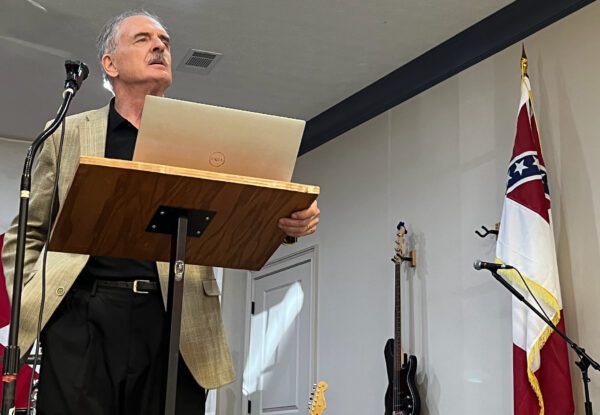
My mother spent a year in Massachusetts, and loved to explore the New England countryside, but was annoyed by the monuments to Yankee soldiers that stand on nearly every village green. To her, these were not heroes or patriots; they were invaders. She finally came up with a formulation that satisfied Southern pride: The memorials were “monuments to Confederate marksmanship.” I invite all Southerners and Copperheads to use that expression, but remember: It was Margaret Ruth Hopper Taylor who coined it in 1969.
I then explained it became impossible for a liberal to be a proud Southerner. I explained how racial hysteria and delusion turned Confederates — whom Congress officially called “great soldiers and great Americans” in 1956 — into what we are now to believe were unspeakable scum.
That evening I co-hosted with James Edwards all three hours of the August 19 broadcast of “The Political Cesspool” and marveled at the talent and energy James brings to the microphone.
The next morning, I drove to Montgomery. I spared myself a visit to the National Lynching Memorial, but I did seek out the life-sized statue of the only woman in world history to become famous — and to lie in state in the Capitol Rotunda — for nothing more than a single half hour of immobility.
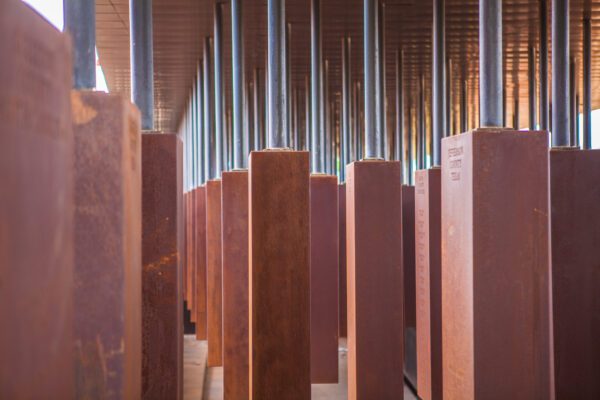
Credit: Soniakapadia, CC BY-SA 4.0, via Wikimedia Commons
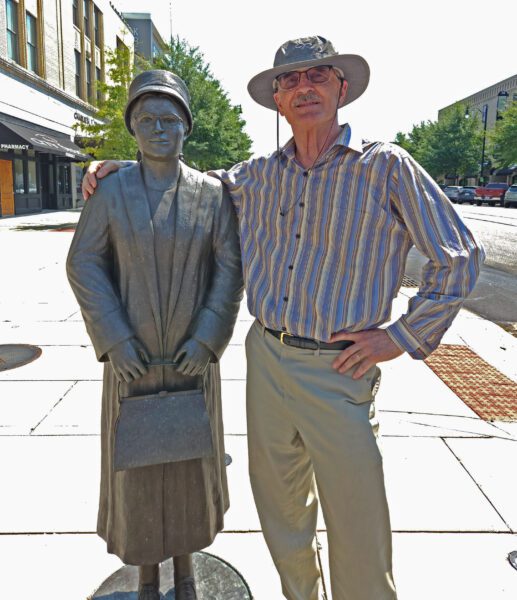
I was pleasantly surprised to find how much Confederate history remains in Montgomery. There is a statue of President Jefferson Davis, right on the Capitol grounds, erected in 1940.
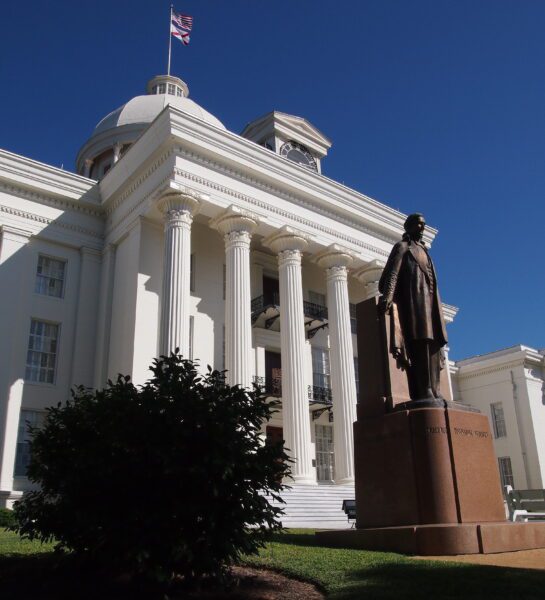
On the back of the monument is a plaque, with The Great Seal of the Confederacy at its top. In the center is George Washington, whom Confederates considered their model in their fight for independence.
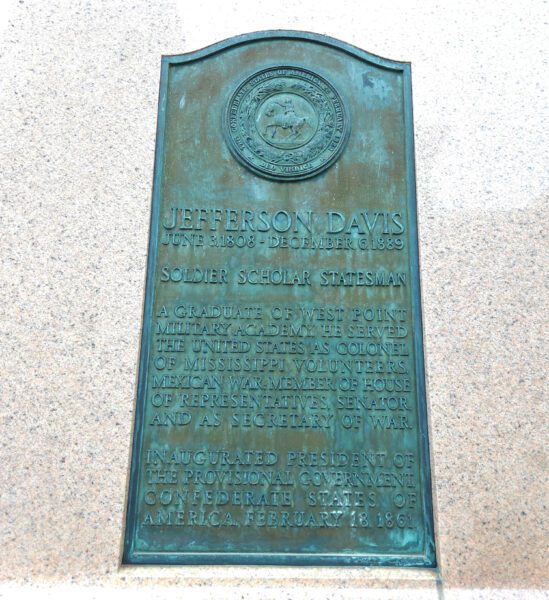
As you can see in the photo, the Capitol building rises just behind the statue.
If you walk up the stairs, in the middle of the top-most, you will find a bronze star makes the very spot where Davis was sworn in as the president of the Confederacy on February 18, 1861.
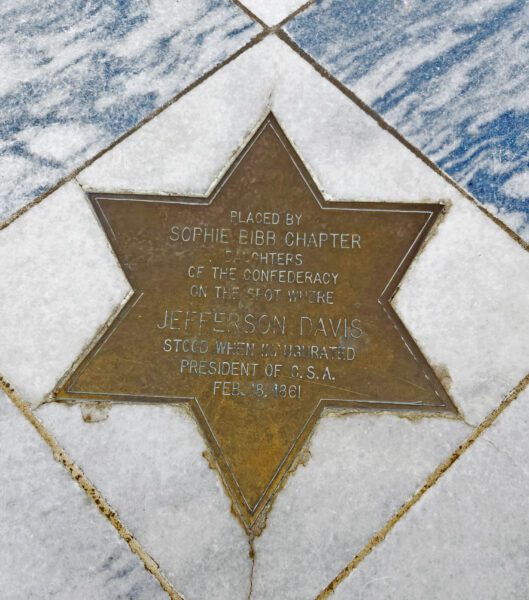
Beside the capitol building is a beautiful Confederate monument.
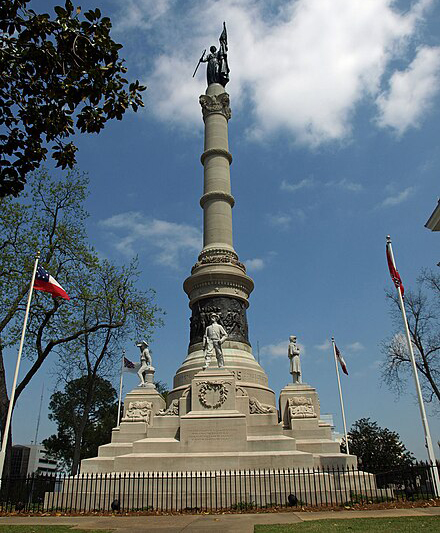
Credit Chris Pruitt, CC BY-SA 3.0, via Wikimedia Commons
This is an archive photo. The Confederate flags were taken down in 2015 by order of Alabama Governor Robert Bentley after Dylann Roof shot nine black churchgoers. The monument commemorates all branches of the Confederate military, and the cornerstone was laid by Jefferson Davis himself.
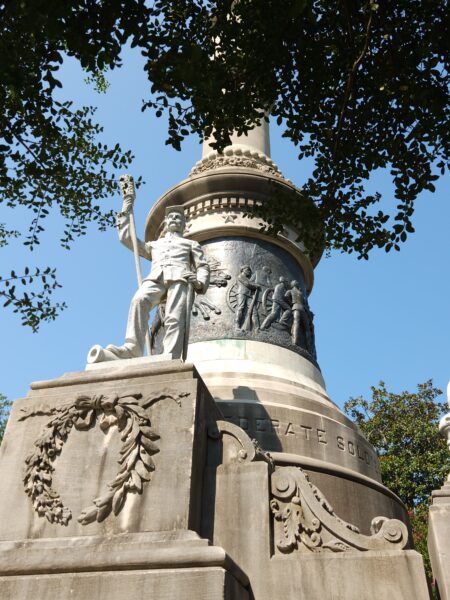
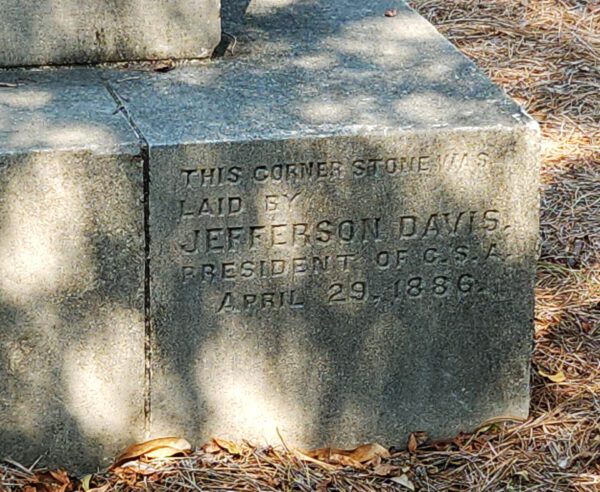
There are inscriptions on all four sides of the base, one of which reads: “The knightliest of the knightly race/who since the days of old,/have kept the lamp of chivalry/alight in hearts of gold.”
The first White House of the Confederacy is a short walk from the Capitol.
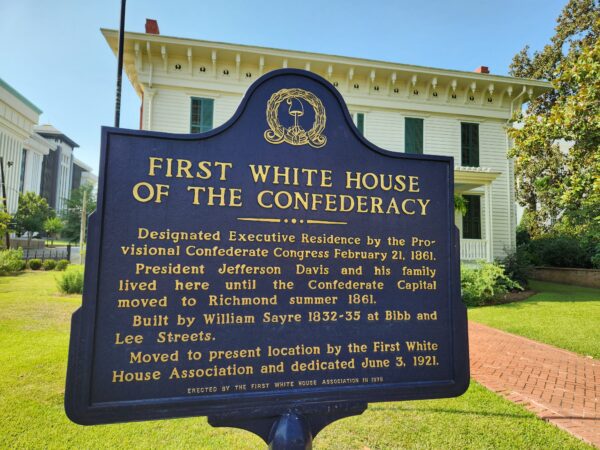
I was unable to go inside because it was closed on Sunday.
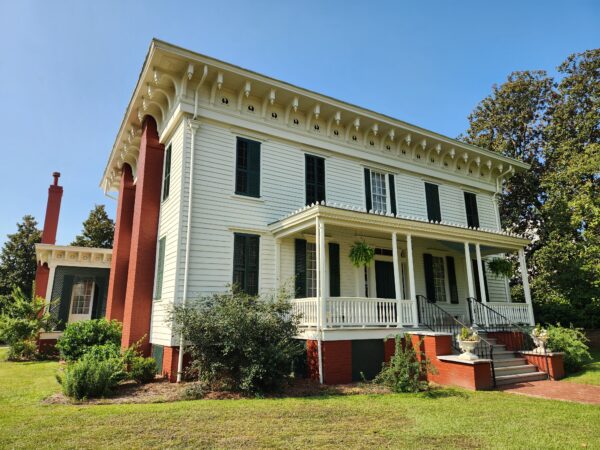
Another Davis memorial I saw was this imposing block of marble on Dexter Avenue, which leads right up to the front of the Capitol. It marks the route of Davis’s inaugural parade and commemorates the first time “Dixie” was played as a band arrangement.
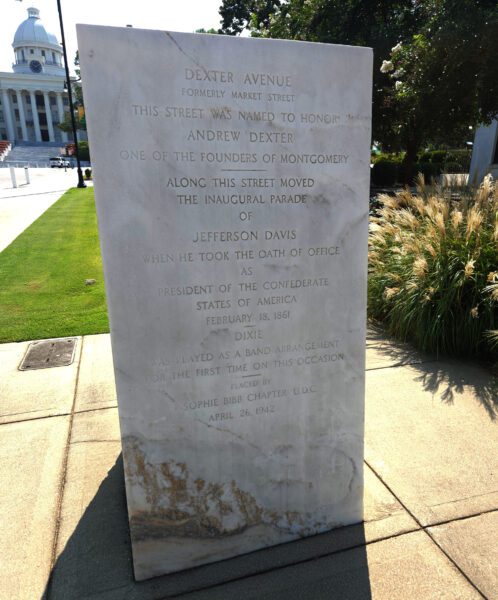
Just a few feet away from this stone is Dexter Avenue Church.
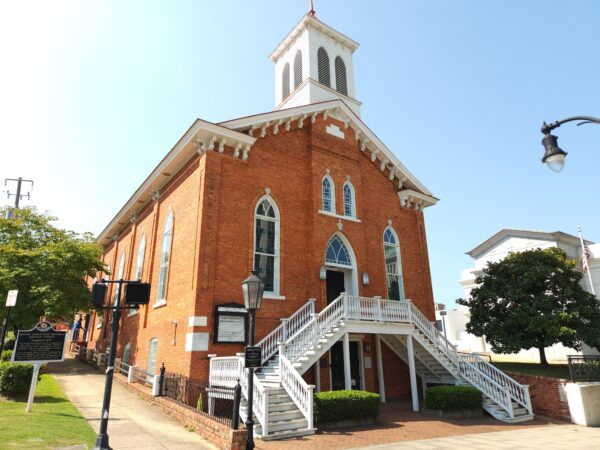
A historic marker says that Dr. Martin Luther King was pastor here from 1954 to 1960.
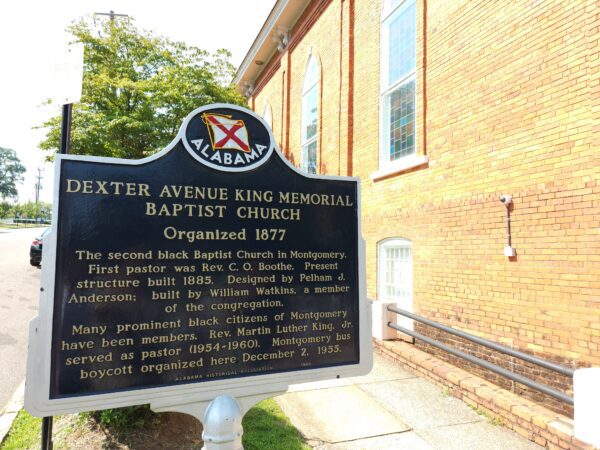
Doc’s second son, Dexter, was named for the church and thus indirectly after the avenue of the inaugural parade.
Just behind the church is the massive headquarters of the Southern Poverty Law Center.

It’s like a fortress; it’s not even clear where the front door is. The fortress is guarded night and day by special armed guards who sport custom SPLC badges. The black gentleman on duty that day was friendly but preferred not to pose for a portrait.
Montgomery is therefore a strange mix of tradition and anti-tradition. I was amused by a pair of banners at an SPLC annex across the street from The Poverty Palace, called the Civil Rights Memorial Center: “One day the South will recognize its real heroes.”
I was glad to see that the SPLC has not forgotten “the knightliest of the knightly race.”
Montgomery can build all the Freedom Rides Museums it likes, but so long as Jefferson Davis looks down on the city, all is not lost.
